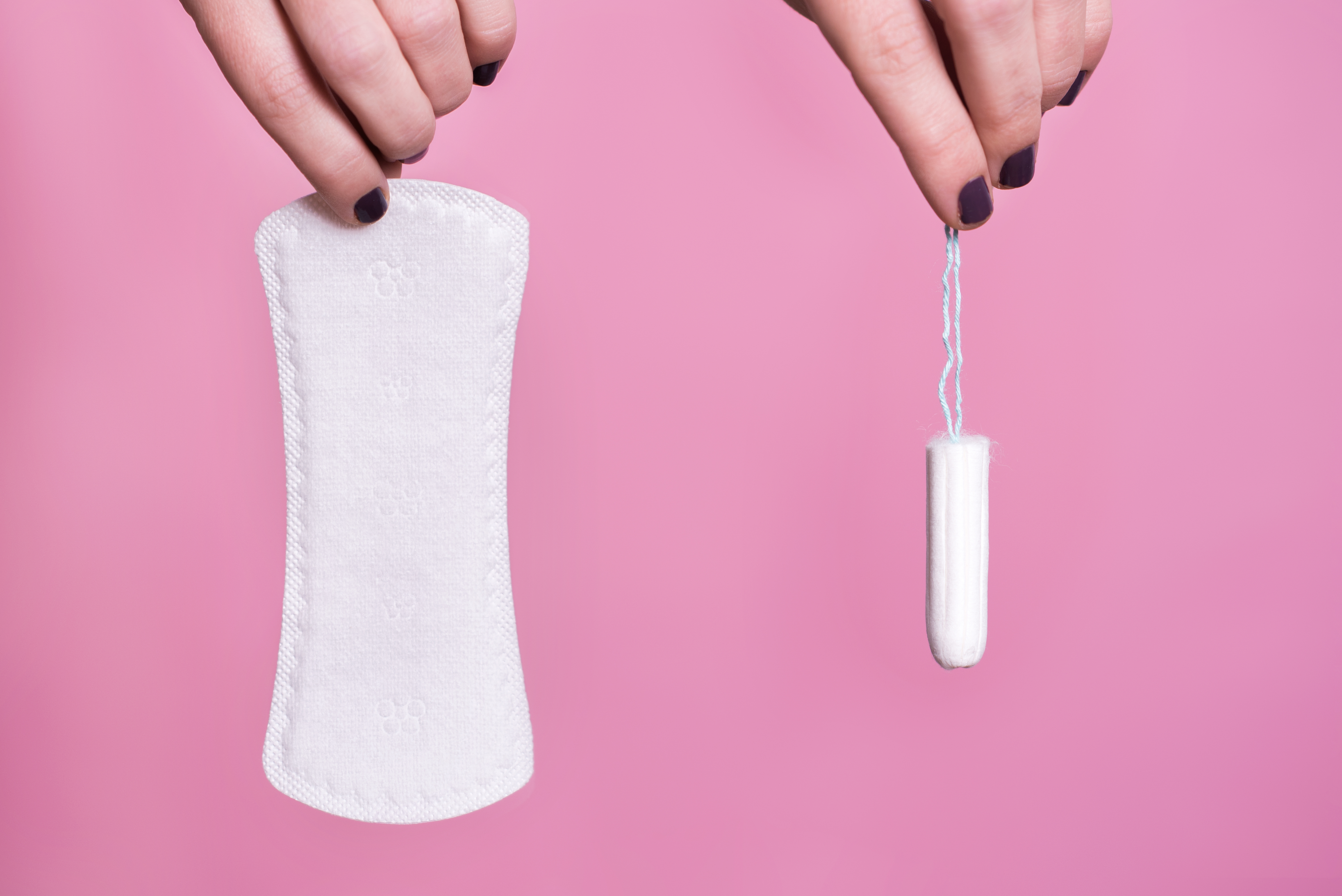Do you consider your period to be “normal”? And do you even know what a healthy period looks like?
You’re not alone. It’s incredible how many women are unaware of what’s considered a normal healthy period.
And there are thousands of women suffering in silence because they assume their debilitating symptoms are how things are supposed to be for a menstruating female.
So how do you know if your period is normal?
Just like every other parameter of health, there is no perfect way to have a period. There’s so much diversity among female bodies, and what may be normal for one woman may be totally unusual for another.
But a healthy period? That’s easier to define.
A healthy period involves hormonal balance, regularity, and consistency. The symptoms of PMS fall within certain parameters, and other measurable health outcomes are involved.
In other words, there are some basic signs to be aware of when determining if your period is healthy or unhealthy, and if you should seek professional help in getting your hormonal health back on track.
Curious if you have a healthy period?
Read on to learn five healthy characteristics of a normal period and five warning signs that something’s not right.
signs of A HEALTHY PERIOD
MILD PMS
Most women don’t have a completely symptom-free period. Irritability, bloating, breast tenderness, fatigue, and appetite changes are common aspects of premenstrual syndrome, also known as PMS.
As hormone expression changes and the uterus prepares to shed its lining, it’s natural to not feel your best. For this reason, mild PMS at the beginning of your period can still be a part of a healthy cycle.
What isn’t healthy is assuming that intense PMS is just part of being a woman.
Cramps that require strong pain medication. Uncontrollable mood swings that lead you from fury to tears at the drop of a hat. Menstrual migraines. These are neither normal nor healthy. And suffering through it all is certainly not a healthy approach.
For more on my thoughts on how to improve common PMS symptoms, check out this blog post.

MANAGEABLE FLOW
The average woman loses about 2 tablespoons of blood during her period. (That doesn’t sound like that much, does it?)
In contrast, a heavier period may have a loss of 5 tablespoons or more each period. That’s more than a quarter cup total.
With a healthy period, you should be able to go several hours before changing a pad, tampon, or menstrual cup. This level of blood flow should also be pretty consistent between your periods.
But what causes menstrual bleeding? The menstrual cycle is a delicate balance of hormonal ebb and flow, beginning with a rise in estrogen during the follicular phase, followed by the secretion of progesterone. Progesterone withdrawal after ovulation is what stimulates menstruation.
When any of the hormones are out of balance, that can impact ovulation timing or the presence of a period. This is also true in relation to how much a woman bleeds during menstruation.
Heavy bleeding can be a sign of a hormonal imbalance or inflammatory issue.
CONSISTENT LENGTH
The average duration of a woman’s period is 5 days, but a healthy period can be anywhere from 3 to 7 days in length. So there’s a pretty wide range of what can be considered normal here.
Consistency is more important when it comes to the length of menstruation. Your period should be consistently fall within your normal range. Anything dramatically different than what you’re used to could be a signal that something is amiss with your hormones.
Hypomenorrhea, or a shorter-than-usual period, occurs most commonly at the beginning and end of a woman’s reproductive life.
When a young woman first starts her period, menstruation may be lighter than normal as hormones regulate and ovulation stabilizes. The same is true for a woman approaching menopause as ovulation gradually tapers off.
However, when hypomenorrhea occurs outside of those occasions, it may be a sign of an abnormality. If you’re well within your reproductive years, you should be having at least 3 days of bleeding for a normal cycle.
Learn how to get your period back WITHOUT birth control in my new FREE TRAINING!
MODERATE CRAMPING
Mild cramping at the beginning of your period is a natural physical response to a complex hormonal event. Many women feel tension in their lower back and sacrum, while others feel cramps in their lower abdomen.
Menstrual cramps are a result of uterine contractions – milder versions of the same contractions that happens during childbirth!
The uterus actually contracts throughout the entire menstrual cycle, but the contractions increase in strength during your period. Sometimes the contractions can cause the uterine walls to press against nearby blood vessels and cut off the oxygen supply to the uterine tissue.
This temporary loss of oxygen to the muscle (the uterus) is what causes menstrual cramps.
It’s also natural to feel some discomfort in the middle of your cycle, during ovulation. This is known as mittelschmerz, from the German words “middle” and “pain.”
As the egg grows within the ovary, the growth and the pressure from the accompanying blood and follicular fluid may contribute to mittelschmerz. Once the egg is fully formed, it is released from the ovary during ovulation.
Mittelschmerz is typically described as anything from a slight ache to a sharp pain, usually occurring on one side of the lower abdomen. Not every woman will experience mittelschmerz, but it’s a key physical sign that your body is preparing for ovulation.
It helps to track your cycle using an app (I like the Daysy fertility monitor) to confirm that ovulation is occurring when you feel this mid-cycle pain.
Though it may be uncomfortable in the short-term, a healthy period should allow a woman to continue about her daily life without significant, disruptive pain.

REGULARITY
A healthy period is predictable. You should be able to track its arrival within a few days’ estimation.
Consistent flow and length are also parts of a regular, predictable period. But frequency is by far the easiest thing to track, and you can collect data on this using a fertility monitor.
Remember: It’s common for your period can be thrown off in times of illness, major life changes, or during airplane travel. Elevated cortisol in times of physical or emotional stress can impact hormonal expression, and may play a role in a delayed or missed period. Changing time zones can actually throw off your hormones enough to miss a period.
From an evolutionary biology standpoint, it’s easy to understand why the female body would halt ovulation during times of danger, disease, or famine.
As long as this only occurs occasionally (like if you’re crossing several time zones on a big trip or have recently come down with the flu) it should be fine.
Apart from these kinds of situations, you should ideally know what to expect every time your period comes around.
You should generally be able to predict when it’s going to happen, as well as how heavy it will be and how many days it will last.
If that sounds totally different than what you’ve been experiencing, keep reading to learn what an abnormal period looks like.
Learn how to get your period back regularly in my new FREE TRAINING!
Would you like to save this post?
Your email address is 100% safe and will never be sent spam.

signs of AN UNHEALTHY or abnormal PERIOD
IRREGULARITY
An irregular menstrual cycle or an unpredictable period are warning signs that something off with your hormones.
There are several reasons why a period could be irregular: maybe you aren’t sleeping well or enough, maybe you’re under-eating, or maybe you’re overtraining.
Even more concerning is the absence of a period altogether. This is known as hypothalamic amenorrhea, and for more about why a missing period is such a big deal, check out this blog post.
If your period is very irregular or has gone missing, then getting it back should be your number 1 priority.
Learn how to get your period back WITHOUT birth control in my FREE TRAINING!
DISRUPTIVE PMS
Anything in the extreme is worth taking a more critical look at, particularly when it involves your fertility.
If you have intense, life-altering symptoms of PMS, these may be signs of hormonal imbalance, blood sugar disregulation, gut bacteria imbalances, inflammation, thyroid dysfunction, nutrient deficiencies, and stress and HPA-axis dysregulation.
Premenstrual dysphoric disorder (PMDD) shares some commonalities with PMS, but adds to the list of physical symptoms four serious emotional components: sadness or hopelessness, anxiety or tension, extreme moodiness, and marked irritability or anger.
Although the cause of PMDD isn’t fully understood, clinical depression or anxiety are often involved in its presentation.
When combined with the hormonal shifts of menstruation – plus the hormonal imbalances commonly found with an unhealthy period – PMDD can be a serious complication.
We know there is a connection between hormones and mood, and a strong link between the gut and the brain. Targeted nutrition therapy to correct hormonal imbalance, reduce inflammation, and repair gut function can go a long way toward improving PMS and PMDD.

HEAVY FLOW
Menorrhagia, or a very heavy flow, may be another sign of an unhealthy period.
If you have to change a pad or tampon every hour or two (or sooner), or if you have a period flow that lasts beyond 8 days, this is more than just inconvenient. It’s likely problematic.
While a heavy flow may be the norm for some women, unusually heavy periods could be a sign of benign uterine polyps or fibroids (non-cancerous growths in the lining of the uterus). In serious cases, a disorder of the uterine lining or even cancer can cause menorrhagia.
In a study comparing hormone levels and menstrual bleeding in women ages 18-44 years, increased levels of follicular stimulating hormone and progesterone were associated with increased blood loss. Increased FSH was also correlated with a longer period. So if you have a heavy or long flow, it may be worth taking a second look at your hormones.
In addition, a heavy flow can be a sign of inflammation.
It’s worth looking at your diet choices in this case, especially if you have a family history of autoimmune disease or other inflammatory conditions.
Consider doing an elimination protocol to identify potential autoimmune and inflammatory triggers that are causing your period to be unusually heavy.
CLOTTING
Menstrual fluid is actually a combination of blood, tissues and cells, and mucous. It can vary in consistency and color, from bright red to darker brown as the period finishes. But the presence of blood clots is a signal that something unusual is happening.
The uterus contains an enzyme that naturally dissolves blood clots. When your flow is abnormally heavy, or if you have a uterine disorder, this natural enzyme may not be as effective, or the clotting may be severe.
Talk to your doctor if you regularly see large clots in your menstrual fluid, as this requires further medical investigation.

EXTREME PAIN
The pain associated with menstruation is known as dysmenorrhea. It can be normal or incredibly abnormal, depending on the severity and the cause.
Most women have some mild pain and discomfort during their menstrual cycle. It’s an unfortunate side effect of having a regular period.
But some women have periods so painful that they experience nausea, vomiting, headaches, and severe cramps. And this level of pain is definitely not normal.
There are two kinds of dysmenorrhea: primary and secondary.
Primary dysmenorrhea refers to recurring instances of menstrual cramping or discomfort. This is usually more like the premenstrual symptoms described in the “Healthy Period” section. But it can get more severe due to hormonal imbalances like high estrogen.
In contrast, secondary dysmenorrhea comes from a disorder of the reproductive organs, such as endometriosis, uterine fibroids, adenomyosis, pelvic inflammatory disease, or cervical stenosis.
The pain of secondary dysmenorrhea begins earlier and lasts longer into the menstrual cycle. It also occurs without the other symptoms of primary dysmenorrhea such as bloating, breast tenderness, or nausea.
You should not be having such severe menstrual pain that you need prescription pain killers or to take a sick day (or more) from work every month.
If the signs of secondary dysmenorrhea are a common part of your period, talk to your gynecologist about a getting pelvic exam and the medical exams necessary to determine the cause.

Menstruation: THE NEW NORMAL
There’s really no such thing as “normal” when it comes to periods.
Every woman is unique, and it makes sense that the way she menstruates would be different, too.
But as you’ve learned, there are some basic issues to look for when determining if your cycle is healthy, or if it’s a sign that something’s off in your body.
Your period is a great barometer for overall health, and a regular, relatively painless cycle should be the goal.
When considering if your period is healthy or unhealthy, take note of what your own personal normal looks like. That way, if anything changes, you’ll have a better idea into what’s really going on.
(That’s why I recommend charting your cycle to get in touch with your hormonal expression!)
For example:
- Do you usually have a 7-day period, and now you’re down to three days of super-light flow?
- Do you typically have a 25-day cycle, but now your cycle is interrupted by spotting?
- Do you typically have cramping on the first day of your period, but now you experience a back-ache for a week?
If so, it may be time to take a closer look at your period and hormonal health.
WHAT’S YOUR NEXT STEP?
If you think your period may fall under the “unhealthy” category, implementing diet and lifestyle changes can be an effective first step in making your period the healthiest it can be.
These steps include…
- Balancing your hormones
- Regulating your blood sugar
- Correcting gut imbalances and infections
- Lowering stress and inflammation
What about you? Is your period healthy or unhealthy? Share your perspective in the comments below!
Want more advice on getting a healthy period? Apply to work with me one-on-one to find solutions to your period problems.
This post may contain affiliate links. If you click on a link and make a purchase, I may receive a small commission.


+ show Comments
- Hide Comments
add a comment